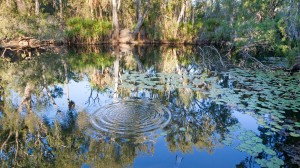IUFRO Spotlight #42 – Forest Education Changing to Reflect Times
As singer-songwriter – and recent Nobel Prize winner – Bob Dylan, once said: The times, they are a-changin’.
That’s certainly true in the forest sector where challenges such as globalization, climate change and societal demands have altered how we view, study and use the forest.
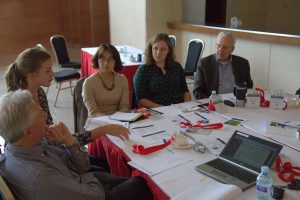
Team members meet to discuss the Global Outlook on Forest Education (GOFE), research project that is one of the Task Force’s major activities. Photo: Mika Rekola
As the forest industry changes to meet new and evolving demands, so too does the focus on forest education.
Forest studies that once concentrated primarily on wood as a resource are now a rarity. Environmental sciences, environmental management, land use, agroforestry and forest science, plus traditional forestry studies are all among today’s educational mix for those with an interest in the woods. Read more…
IUFRO Spotlight #41 – Sustainable Planted Forests to Meet Growing Global Needs

Plantation of Olga Bay Larch at Qingyuan in Liaoning Province, China. Plantations such as these will be an important source of roundwood in the future. (Photo by John Innes, Coordinator of IUFRO Task Force on Resources for the Future: Transformation in Forest Use)
The 2015 Global Forest Resources Assessments report from the UN Food and Agriculture Organization (FAO) noted that “…in planted forests, a new timber resource is continuing to be created … (that will) contribute significantly not only to future wood and energy supplies but … (also to) a range of wider social and environmental benefits…”
About 25 years ago, planted forests represented 4% of the world’s forested area. Today they represent almost 7%. But that 7% provides at least one-third of the world’s timber, so their importance should not be underestimated. Read more…
IUFRO Spotlight #40 – Biological Invasions: An Undesired Effect of Globalization
Increasingly, the trend of globalization causes many species to be moved around the world and into areas in which they have never before existed.
Unfortunately, when organisms are moved out of the regions where they evolved and transported to new regions where there are few or no natural limiting factors – predators, as an example – populations can sometimes explode with profound impacts on the new and vulnerable territory. Read more…
IUFRO Spotlight #39 – Governments Reclaiming Role in Forest Certification
Many governments are reclaiming a role that had been pretty well ceded to ENGOs and other private organizations over the past few decades – state governance of forest certification.
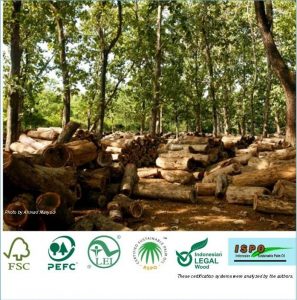 According to the authors of From governance to government: The strengthened role of state bureaucracies in forest and agricultural certification, this has become more noticeable following the recent rise of state-driven schemes for certifying timber legality as well as palm oil production in places such as Indonesia.
According to the authors of From governance to government: The strengthened role of state bureaucracies in forest and agricultural certification, this has become more noticeable following the recent rise of state-driven schemes for certifying timber legality as well as palm oil production in places such as Indonesia.
Their report sums up findings from a variety of recent studies and suggests, they say, that public administrations are beginning to reclaim certification authority through state-led mandatory schemes as part of a trend away from “transnational private governance to international state-driven governance.” Read more…
IUFRO Spotlight #38 – Climate Change and Invasive Alien Species Worsen Outlook for Forest Health
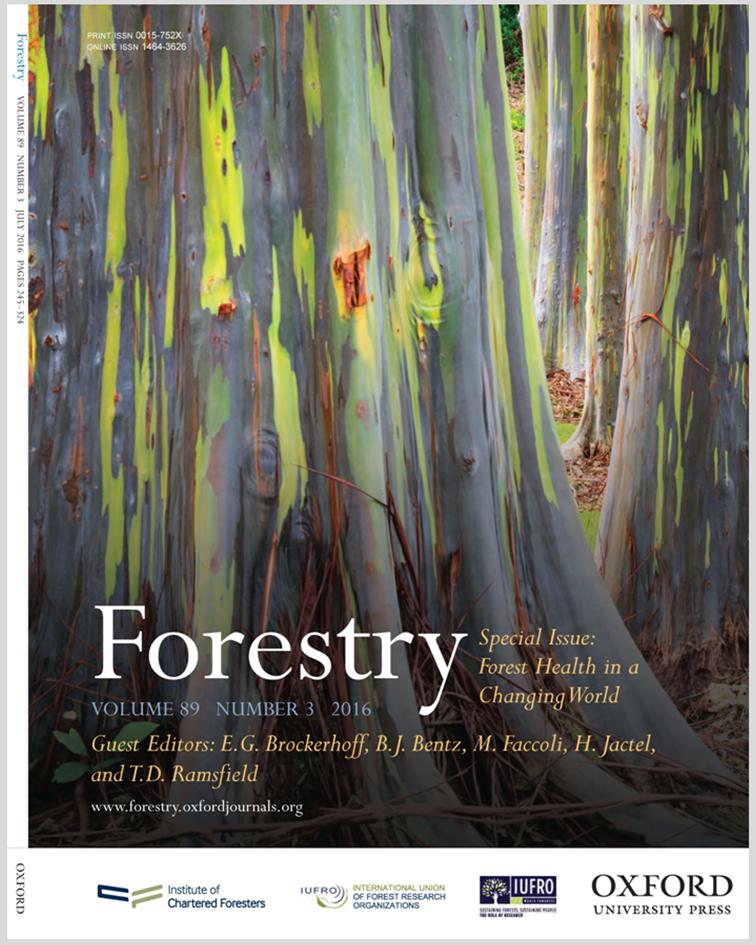
As global trade has expanded, there has also been an accompanying increase in invasions of insects and pathogens into areas where they never before existed.
In many cases these invasions have caused significant forest damage, negative economic impacts and loss of forest ecosystem services.
Meanwhile, climate change is affecting the geographic distribution of host trees and their associated insects and pathogens. Increased pest impacts – both native and alien – can be expected.
IUFRO Spotlight #37 – Conserving Biodiversity While Managing Tropical Forests
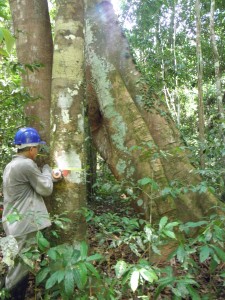
Measurement of tree dimensions in permanent sample plot in the Tapajós National Forest, Brazil. Photo: Angela Luciana de Avila
Managed forests are important landscape components in tropical regions. But an understanding of the response of the forests’ biodiversity to silvicultural interventions has been limited.
Finding out more about how that biodiversity responds was a fundamental question behind the research leading to the publication of Medium-term dynamics of tree species composition in response to silvicultural intervention intensities in a tropical rain forest. Read more…
IUFRO Spotlight #36 – Responses to climate change? All knowledge counts!
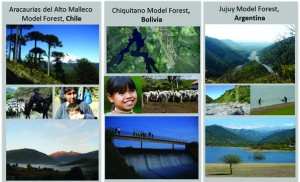 EcoAdapt aims to enhance local communities’ engagement in innovative solutions to climate change adaptation.
EcoAdapt aims to enhance local communities’ engagement in innovative solutions to climate change adaptation.
The project, a joint undertaking by four research and five civil society organizations from Europe and Latin America, was initiated in 2012 and is being financed by the European Union for a four-year period.
Its overall objective is to develop ecosystem-based strategies for adaptation to climate change in three Latin American Model Forests – in Bolivia, Argentina and Chile. Read more…
Spotlight #35 – Cool it! Use Forest Landscape Restoration to Fight Climate Change

The stoplight tool is essentially a simplified presentation of complex restoration initiatives, and how they may contribute to climate change mitigation and adaptation and vice-versa, in a specific local context. (Image by Yougen/iStock)
Forest landscape restoration (FLR) can be a major weapon in the battle against climate change.
FLR can contribute to climate change mitigation and adaptation by increasing the productivity of landscapes and by enhancing the resilience of forest ecosystems and reducing the vulnerability of forest-dependent communities.
When one considers that about 25% of the world’s land surface is being degraded in one way or another and about 15% of that land surface is considered appropriate for forest landscape restoration, it underlines both the need for significant remedial action while, at the same time, pointing to a reasonable and beneficial way to achieve that restoration. Read more…
Spotlight #34 – Investigating Potential and Risks in Biomass
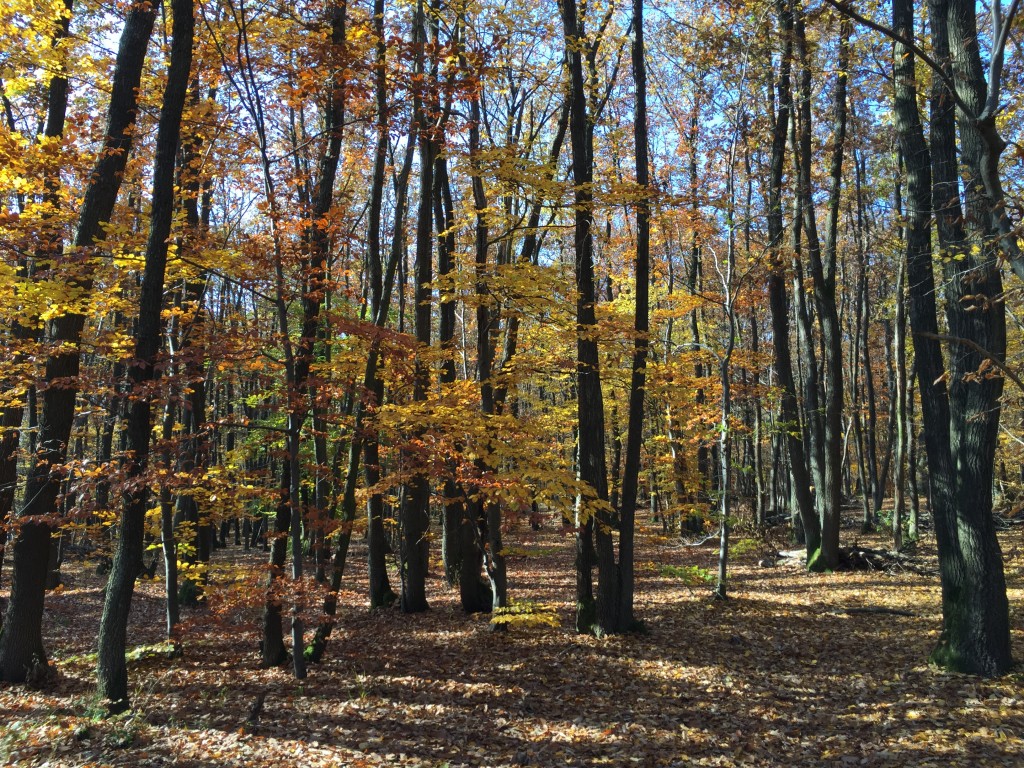
Coppice woodlands once provided significant shares of biomass for thermal energy in the proximity to urban areas, while representing hotspots of biodiversity. Can we adopt traditional management practices to today’s needs and still ensure sustainable production? And how can we harmonize existing guidelines to achieve this goal? The image shows a Quercus-Carpinus dominated outgrown coppice forest that is situated within the city boundaries of Vienna, Austria. (Photo by Viktor Bruckman)
Renewable resources are critical to the sustainable future of our planet. That means biomass is being looked on, in many ways, as a potential game-changer.
It is seen as a mitigator of climate change, as a source of energy and as the source for a variety of bio-based products that range from wood to bio-plastics and composite materials.
Recognizing this, IUFRO’s newly constituted Sustainable Forest Biomass Network Task Force plans to explore the potentials and the risks of further development of biomass – specifically biomass from forests.
The Task Force is one of several organized to advance knowledge under five research themes in accordance with the IUFRO 2015-2019 Strategy. Read more…
Spotlight #33 – Connecting the Dots among Forests, Soils and Water
When one thinks of forests, the immediate thought is most likely of trees. That makes sense.
But forests and trees don’t exist in isolation. Things that affect – and are affected by – forests range from human activities to climate; from water and soils to insects and disease and from economics to forest products, to name just a few.
With that in mind, the IUFRO 2015-2019 Strategy focuses on five research themes: Forests, Soil and Water Interactions; Forests for People; Forests and Climate Change; Forests and Forest-based products for a Greener Future; and Biodiversity, Ecosystem Services and Biological Invasions. Read more…

